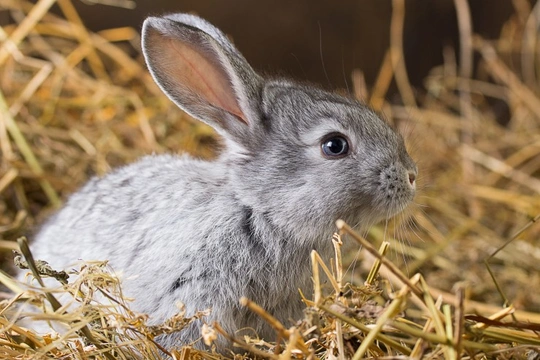
How to feed your rabbit a natural diet
In the wild, rabbits eat exclusively grass and other plants, whilst most owners of pet rabbits feed a combination of hay, rabbit food mix and sometimes, fresh grazing grass.
While feeding a complete dry rabbit food may be one of the most convenient ways to feed your rabbit, this is not ultimately the best diet for rabbits, as they do not naturally eat a selection of ready-prepared dried seeds and grains!
The digestive system of rabbits is a very sensitive one, and it must remain mobile at all times, which means that rabbits are grazing animals that naturally eat throughout the day, and their digestive system is constantly processing food. If their digestive system stops for a time, such as if they run out of food, it is very hard to encourage the rabbit to start eating again and get everything moving, because rabbits simply are not designed to eat a large amount of food at set mealtimes, and fast in between!
The best diet to feed to your pet rabbit is one that mimics as closely as possible the diet that they would eat in the wild-without a large amount of pre-packed rabbit mix-and if possible, you should try to feed your rabbit a diet that matches their natural lifestyle, cutting out the bulk of their pre-prepared food!
However, this is of course more challenging than simply buying a packet of food and serving it up, but if your rabbit’s health and welfare is your primary concern and you want to enable them to lead as natural a lifestyle as possible, it is something that you may wish to look into.
In this article, we will look at what the components of a natural rabbit diet include, and how to feed it. Read on to learn more.
The hay and greens diet
The most natural diet that it is possible to feed to pet rabbits is known as the hay and greens diet, which involves providing hay as a substitute for constant access to grass, and topping this up with a range of green vegetables, leaves and plants that your rabbit would have access to in the wild.
We will look at what should be involved in such a diet below.
Hay
First of all, it is important to remember that the bulk of your rabbit’s diet should consist or good quality grazing fibre, which essentially means grass and/or hay. If your rabbit can graze in your garden, this will provide a significant amount of their necessary grazing fibre, but if your rabbit lives indoors, and as a top-up for grazing grass, you will need to provide a constant supply of good quality, suitable rabbit hay for your pet.
Buying a high quality packaged hay that is designed just for rabbits is the best way to do this, as it will be rich in nutrients, and carefully farmed to ensure that it is safe for your rabbit to eat. Remember that rabbits must never be fed lawnmower clippings, and so this is not a viable alternative to shop-bought hay!
Greens
As well as hay, your rabbit should be provided with a good range of appropriate fresh greens, which you can either buy fresh like you would with your own fruit and veg, or forage from the garden and hedgerows. However, unless you are experienced in foraging and plant identification, foraging can be potentially risky, as it is of course vital to be able to tell different greens apart, pick them from a safe, clean source, and ensure that you do not introduce bugs and parasites into your pet’s diet.
Ideally, you should give your rabbit a selection of at least five different greens every day, which should be very fresh, cleaned before feeding, and of course, safe and appropriate for your pet.
The list of rabbit-suitable greens and leaves is a long one, so look into this, print yourself off a list and take it along with you when you shop, to ensure that you are making good food choices for your pet.
Remember that while a huge number of green leafs and plants are rabbit-suitable, a lot of plants aren’t, including any plant that grows from a bulb rather than a seed, and that some greens, whilst technically not toxic, may be too rich for your rabbit to comfortably digest.
Making dietary changes
You should never make sudden changes to your rabbit’s diet, and this is particularly important if you are changing them over from a commercial diet to a hay and greens diet instead.
Plan your changes over the course of two to four weeks, gradually phasing out your rabbit’s commercial food and integrating an increasingly higher level of appropriate greens, alongside of their hay rations. Remember that your rabbit must have access to grazing grass or hay at all times, and never leave ignored or decaying food in your rabbit’s pen or hutch.
You can of course continue to offer or feed a certain amount of a commercial diet, and this can be helpful in terms of ensuring that your rabbit eats a complete diet, particularly if they are rather finicky and will only eat a narrow selection of different sorts of greens.



